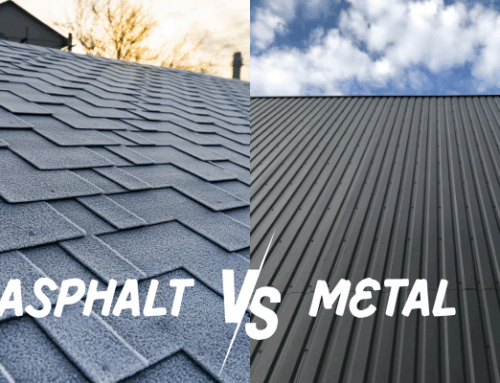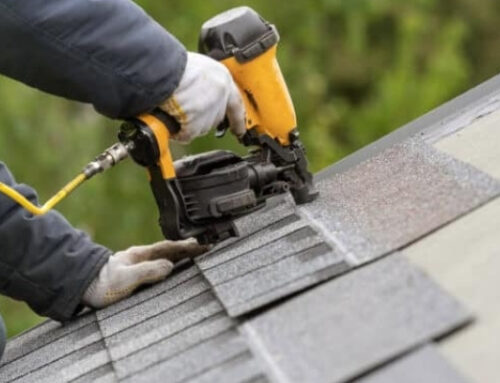Decision between restoring your existing roof or choosing for a complete replacement is one of the most resulting options that can be the owner of a home. While the restoration often appears cheaper upfront, hidden costs and longevity factors can dramatically replace the equation. This broader comparison breaks both options into important factors to help you make the smartest investment.
Your roof is one of the most important and expensive partners of your home. When it starts showing signs of wearing, you have to face a difficult decision: should you restore it or change it completely?
The answer is not always straightforward. Restoration can be a cost -effective short -term fix, while replacement provides long -term protection. But which option really saves you more money over time?
Let’s break the major differences, costs and long -term benefits so that you can make the smartest option for your home and budget.
What’s the Difference?
Roof restoration involves repairing and recurring an existing roof to expand your life-usually up to 10–15 years. It prefers to give your roof a major facelift without tearing. Full replacement means completely removing the old roof and installing a brand-nail, which resets the clock with a 25–50-year-old lifetime.
When Restoration Makes Sense
- Your roof has minor damage—a few missing shingles, small leaks, or surface wear.
- The structure is still sound—no widespread rot, sagging, or major water damage.
- You’re on a tight budget—restoration costs 50-70% less than a full replacement.
- You plan to sell soon—it’s a quick, affordable way to boost curb appeal.
Warning: Restoration is not a permanent fix—if your roof is already 20+ years old, replacement is inevitable.
When Replacement Is the Better Investment
- Your roof is near the end of its lifespan—most asphalt shingles last 20-30 years.
- There’s extensive damage—rotted decking, multiple leaks, or storm damage.
- You want better materials—upgrading to impact-resistant or energy-efficient roofing.
- You’re staying long-term—a new roof adds value and prevents recurring repair costs.
Key Benefit: A full replacement often comes with better warranties (25+ years vs. 10-15 for restoration).
1. Cost Analysis: Upfront vs. Lifetime Value
Roof Restoration
- Typically costs 40-60% less than full replacement initially
- Involves targeted repairs, re-coating, and partial material replacement
- May require more frequent maintenance (every 3-5 years vs. 10+ for new roofs)
- Potential hidden costs: Undiscovered decking damage that emerges later
Full Replacement
- Higher initial investment (often 2-3x restoration costs)
- Provides “reset button” with full material warranties (25-50 years)
- Eliminates compounding repair costs from aging systems
- Added value: Many homeowners recoup 60-70% of costs in increased home value
Key Consideration: Restoration makes sense only if >70% of roof materials are salvageable
2. Longevity & Durability Comparison
| Factor | Restoration | Replacement |
|---|---|---|
| Expected Lifespan | 5-12 years | 20-30+ years |
| Weather Resistance | Moderate (depends on existing structure) | Maximum (meets current building codes) |
| Warranty Coverage | Limited (often 5-10 years) | Comprehensive (25+ years on materials) |
| Future Repair Needs | Likely annual inspections | Minimal for first 15 years |
Critical Factor: Restorations extend life only if the substrate is sound – deteriorated decking nullifies benefits
3. Material & Structural Considerations
When Restoration Works Best
- Metal Roofs: Recoating can add 15+ years to properly maintained panels
- Tile Roofs: Individual tile replacement is cost-effective if underlayment is intact
- Low-Slope Roofs: Membrane roofs (TPO, EPDM) often good candidates for patching
When Replacement is Mandatory
- Multiple Leak Origins (indicates systemic failure)
- Rotted or Sagging Decking (restoration can’t fix structural issues)
- Asphalt Shingles with >30% granule loss (too far gone for coatings)
Pro Tip: Core sampling (removing small roof sections) reveals hidden substrate conditions
4. Energy Efficiency Impacts
Restoration Pros
- Cool roof coatings can reduce attic temps by 10-15°F
- Immediate energy savings without full tear-off disruption
Replacement Advantages
- Opportunity to upgrade insulation during full reroof
- Modern materials offer better reflectivity “out of the box”
- Can address ventilation flaws causing ice dams/moisture
Surprising Fact: A full replacement with proper insulation often pays for itself in 12-18 years via energy savings
5. The Hidden Costs Most Contractors Won’t Mention
Restoration Risks
- Shortened lifespan if underlying issues aren’t addressed
- Warranty voids if applied over compromised structures
- Repeated maintenance costs that exceed replacement over time
Replacement Surprises
- Uncovered decking repairs (15−25/sq.ft. if wood is rotted)
- Code upgrade requirements (new drip edge, ventilation standards)
- Landscaping damage from larger equipment and debris
Money-Saving Insight: Many roofers offer discounted tear-off rates if scheduled with replacement
6. Decision Flowchart: Which Option is Right For You?
Choose Restoration If
- Roof is <15 years old with isolated damage
- Budget can’t accommodate full replacement
- You plan to sell within 5-7 years
Opt For Replacement If
- Roof is >20 years old
- Multiple leaks or visible sagging exists
- You want maximum warranty protection
- Energy savings are a priority
Middle Ground: Some companies offer hybrid restoration (full tear-off + reuse of salvageable materials)
Conclusion
Replacement Wins for Long-Term Savings
While restoration is cheaper upfront, replacement almost always saves more money over time—especially if your roof is aging. A new roof means decades of worry-free protection, higher home value, and lower insurance premiums.
Still unsure? Get quotes for both options from trusted contractors and compare the 10-year cost projections. Sometimes, spending more now means saving thousands later.
Your roof protects everything underneath it—make sure your investment does the same.






